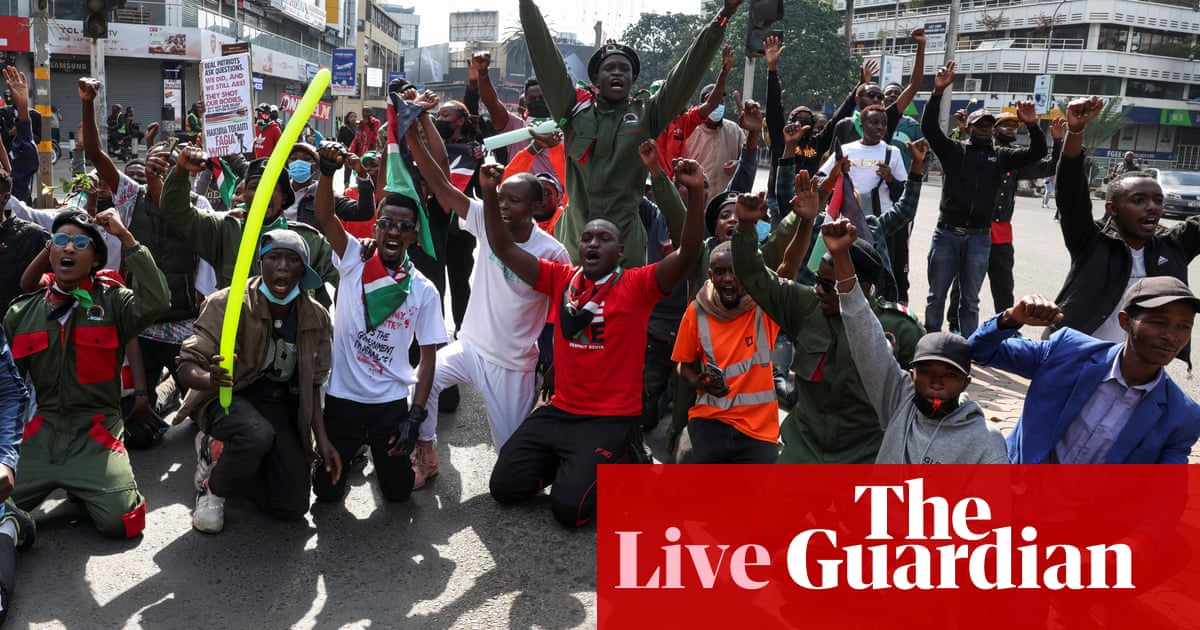Hello and welcome to our coverage of the events unfolding inNairobi,Kenya,today.
Thousands of protesters have taken to Kenya’s streets to mark a year since people stormed parliament at the peak of anti-government demonstrations, despite fears that they would be met by state-backed gangs and police violence.
Kenyans have planned to march across the country today to honour those who were killed during last year’s protests.The demonstrations last year saw at least 60 people being killed and many more disappearing.
Early on Wednesday, police blocked major roads leading into the capitals central business district, while government buildings were barricaded with razor wire.
The protests last year came as a response to a series of proposed tax increases which included hikes on sanitary towels, digital content, car ownership, and basics like oil and bread while many in the country were already grappling with a cost of living crisis.
President William Rutoscrapped the bill in response to the backlash and restructured his cabinet to include opposition figures. However, deep resentment against the president has continued to rise and public anger over the use of force by security agencies has not abated.
Here are some of the pictures coming to us through the wires of the latest events unfolding inNairobi:
Last year’s demonstrations, in which 60 people died and many moredisappeared, were prompted by proposed tax increases.
TheKenyan government’s 2024 finance billproposed a$2.7bn tax increasewhich included hikes on sanitary towels, digital content, car ownership, and basics like oil and bread, in a country already grappling with a particularly painful cost of living crisis.
Kenya’s cash-strapped government had said previously that the tax increases were necessary to service the huge public debt of 10tn shillings (£60bn), equal to roughly 70% of GDP.
Critics of the hikes began turning their attention to the International Monetary Fund (IMF),which was seen as the driving force behindpresident William Ruto’ssince withdrawn plans.
Two weeks before the protests last year started, theKenyan government and the IMFhad a meeting where they agreed the government would increase taxes, reduce subsidies and cut government waste – in effect austerity measures – as conditions to access the IMF’s $3.9bn loan.
Ruto withdrew the bill a day after violent protests erupted around the country after its approval by parliament.
Hello and welcome to our coverage of the events unfolding inNairobi,Kenya,today.
Thousands of protesters have taken to Kenya’s streets to mark a year since people stormed parliament at the peak of anti-government demonstrations, despite fears that they would be met by state-backed gangs and police violence.
Kenyans have planned to march across the country today to honour those who were killed during last year’s protests.The demonstrations last year saw at least 60 people being killed and many more disappearing.
Early on Wednesday, police blocked major roads leading into the capitals central business district, while government buildings were barricaded with razor wire.
The protests last year came as a response to a series of proposed tax increases which included hikes on sanitary towels, digital content, car ownership, and basics like oil and bread while many in the country were already grappling with a cost of living crisis.
President William Rutoscrapped the bill in response to the backlash and restructured his cabinet to include opposition figures. However, deep resentment against the president has continued to rise and public anger over the use of force by security agencies has not abated.
